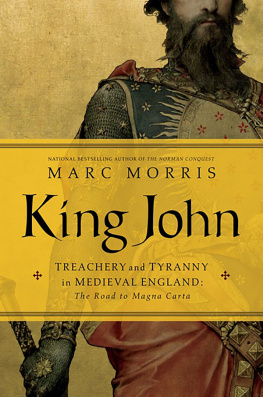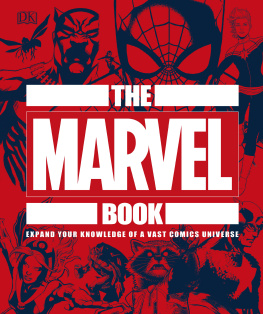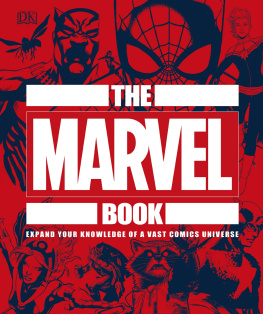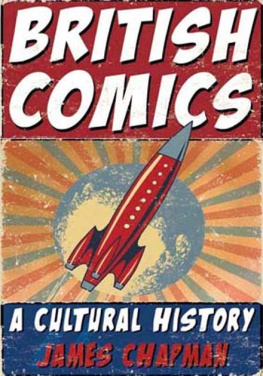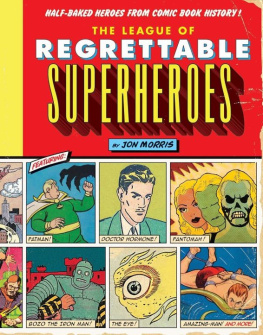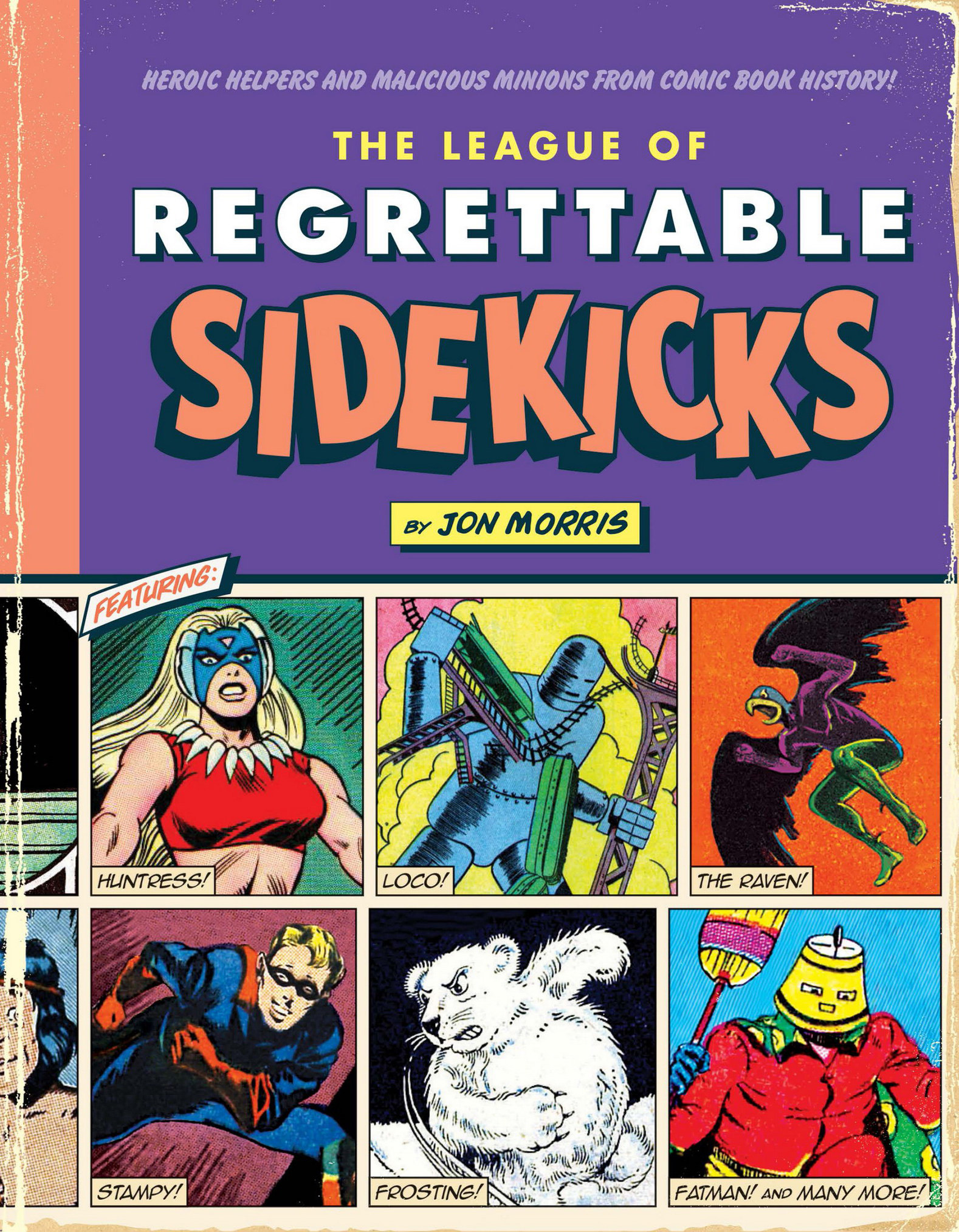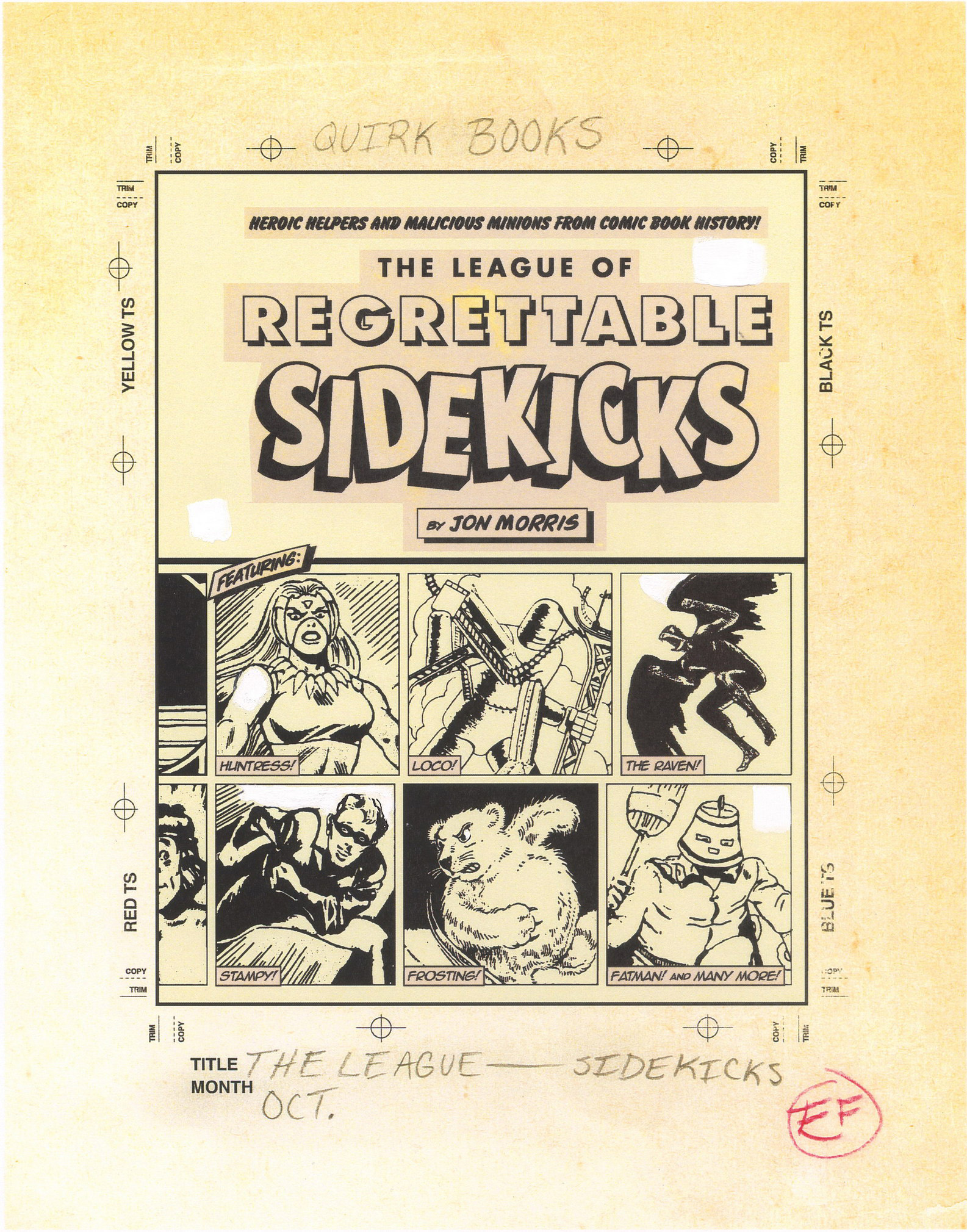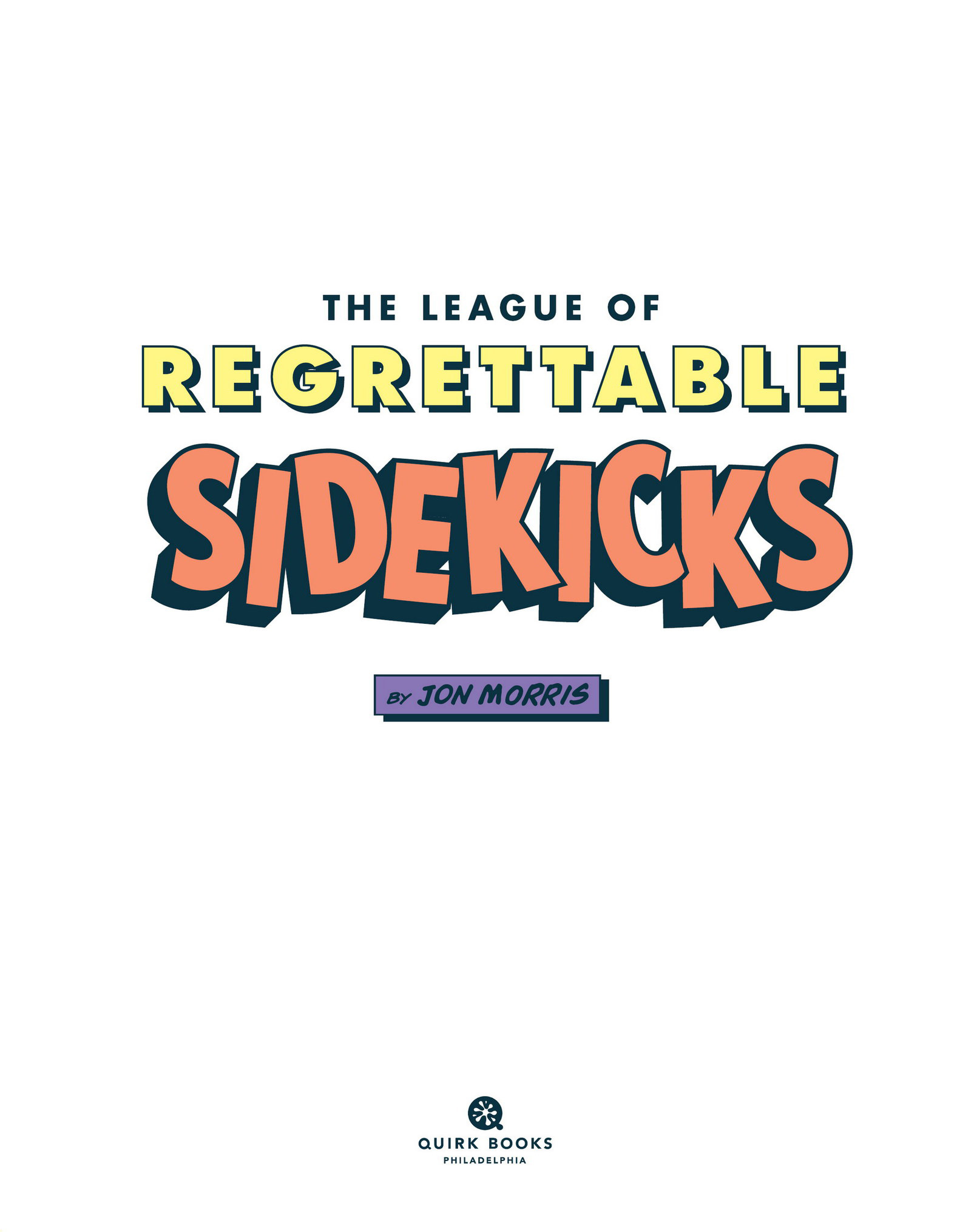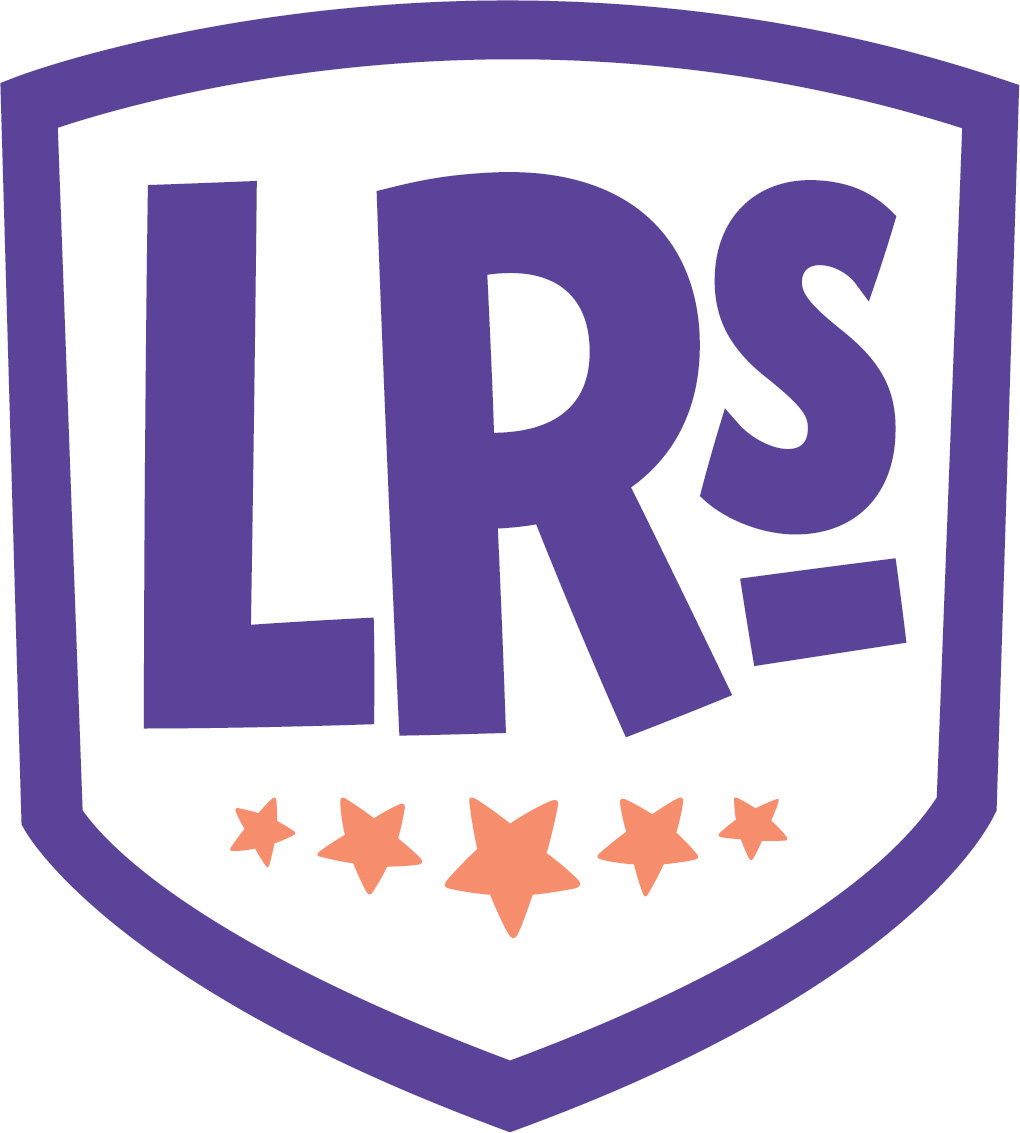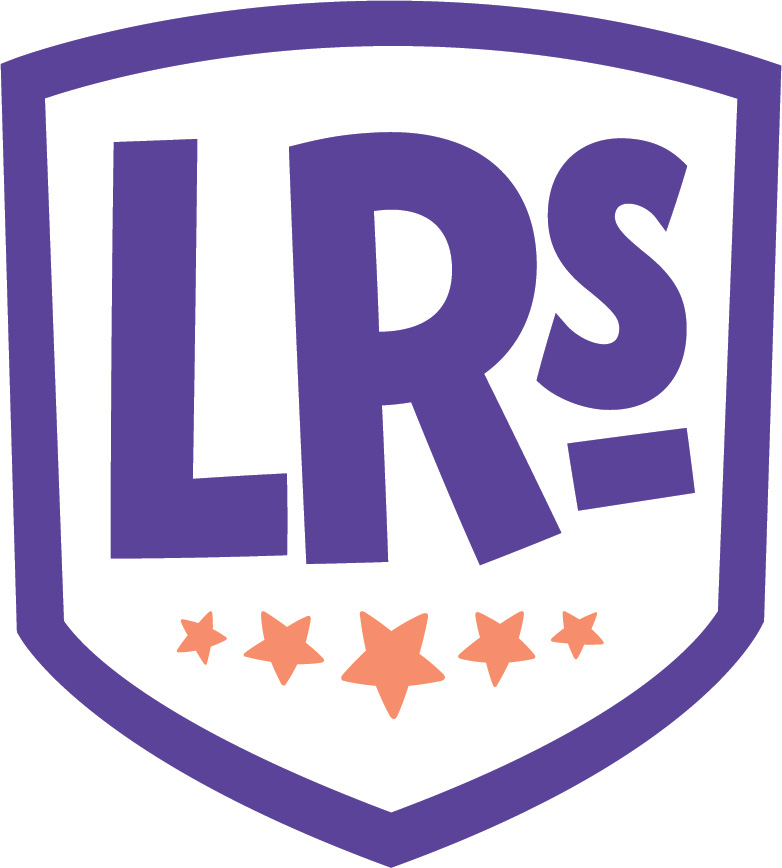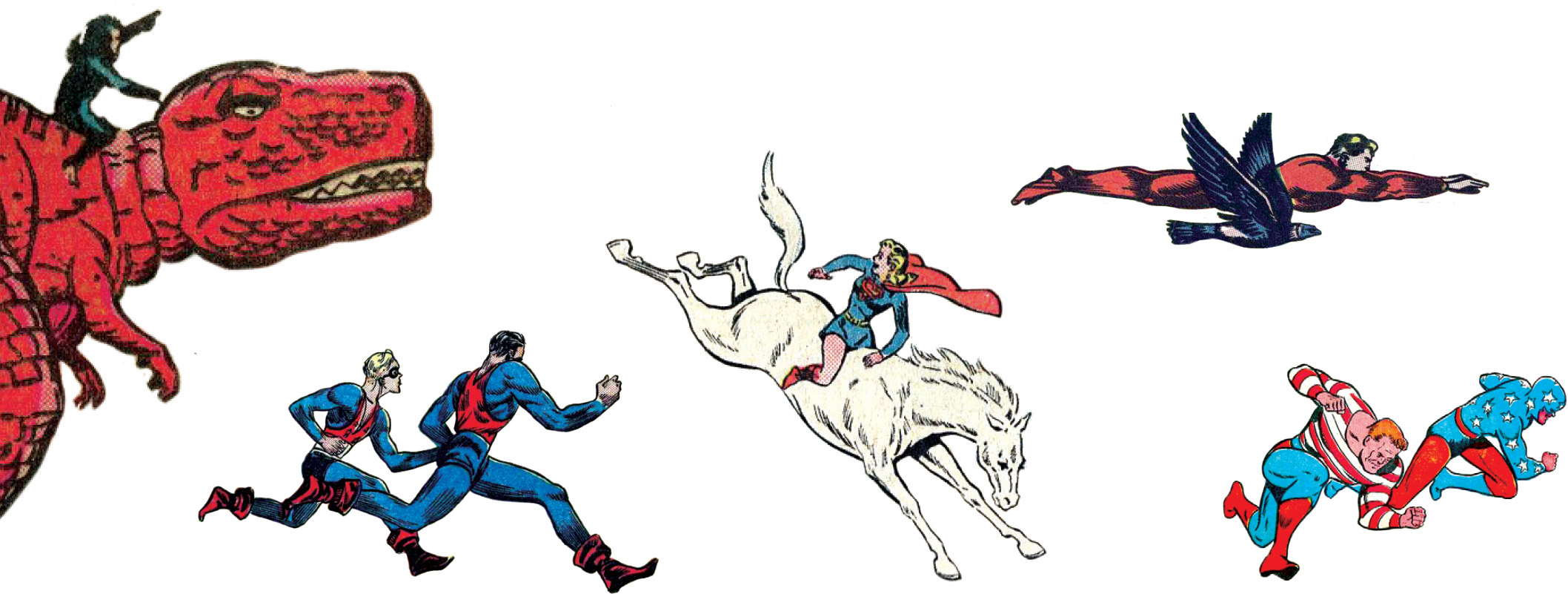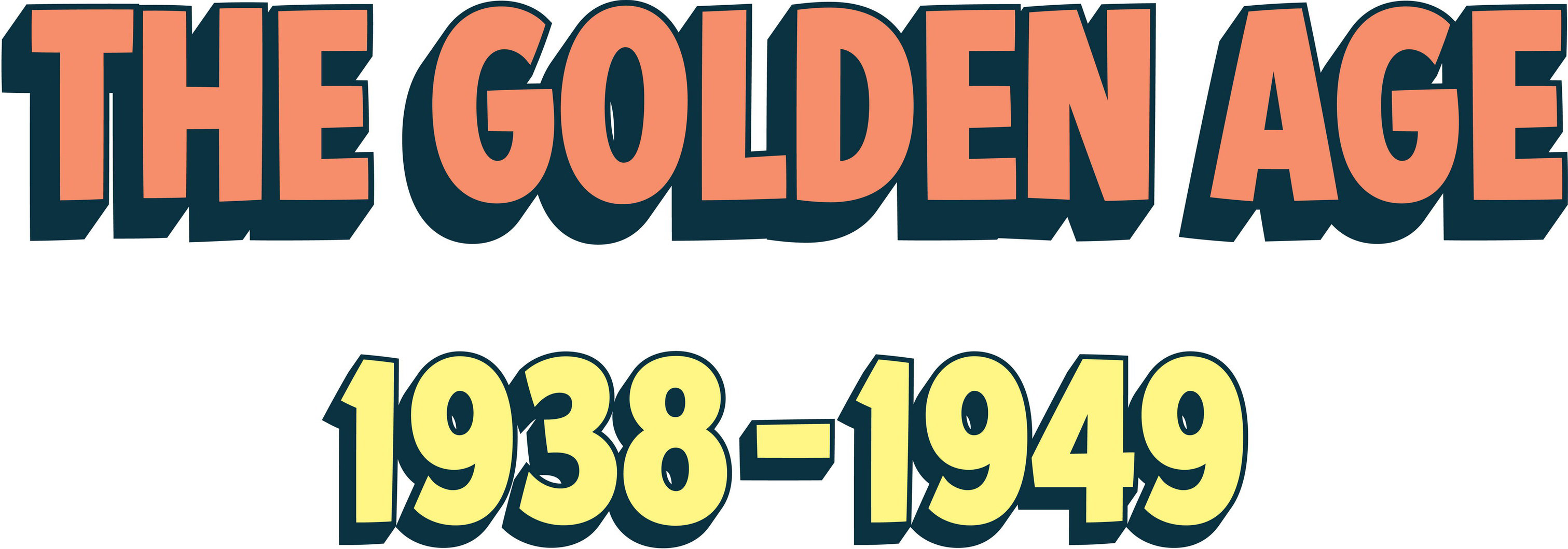Contents
Copyright 2018 by Jon Morris
All rights reserved. Except as authorized under U.S. copyright law, no part of this book may be reproduced in any form without written permission from the publisher.
Library of Congress Cataloging in Publication Number: 2017960599
ISBN: 978-1-68369-076-4
Ebook design adapted from printed book design by Elissa Flanigan
Production management by John J. McGurk
Ebook ISBN9781683690771
All illustrations in this book are copyrighted by their respective copyright holders (according to the original copyright or publication date as printed in the comics) and are reproduced for historical purposes. Any omission or incorrect information should be transmitted to the author or publisher, so it can be rectified in any future edition of this book. All DC Comics characters, related logos, and indicia are trademarked and copyrighted by DC Comics Inc. All Marvel Comics characters, related logos, and indicia are trademarked and copyrighted by Marvel comics Inc. All Dell Comics characters, related logos, and indicia are trademarked and copyrighted by Dell Comics Inc. All Harvey Comics characters, related logos, and indicia are trademarked and copyrighted by Harvey Comics Inc. All Archie Comics characters, related logos, and indicia are trademarked and copyrighted by Archie comics Inc.
Quirk Books
215 Church Street
Philadelphia, PA 19106
quirkbooks.com
v5.3.2
a
Dedicated to Michael, companion of the Red Bee. Its finally your time to shine!
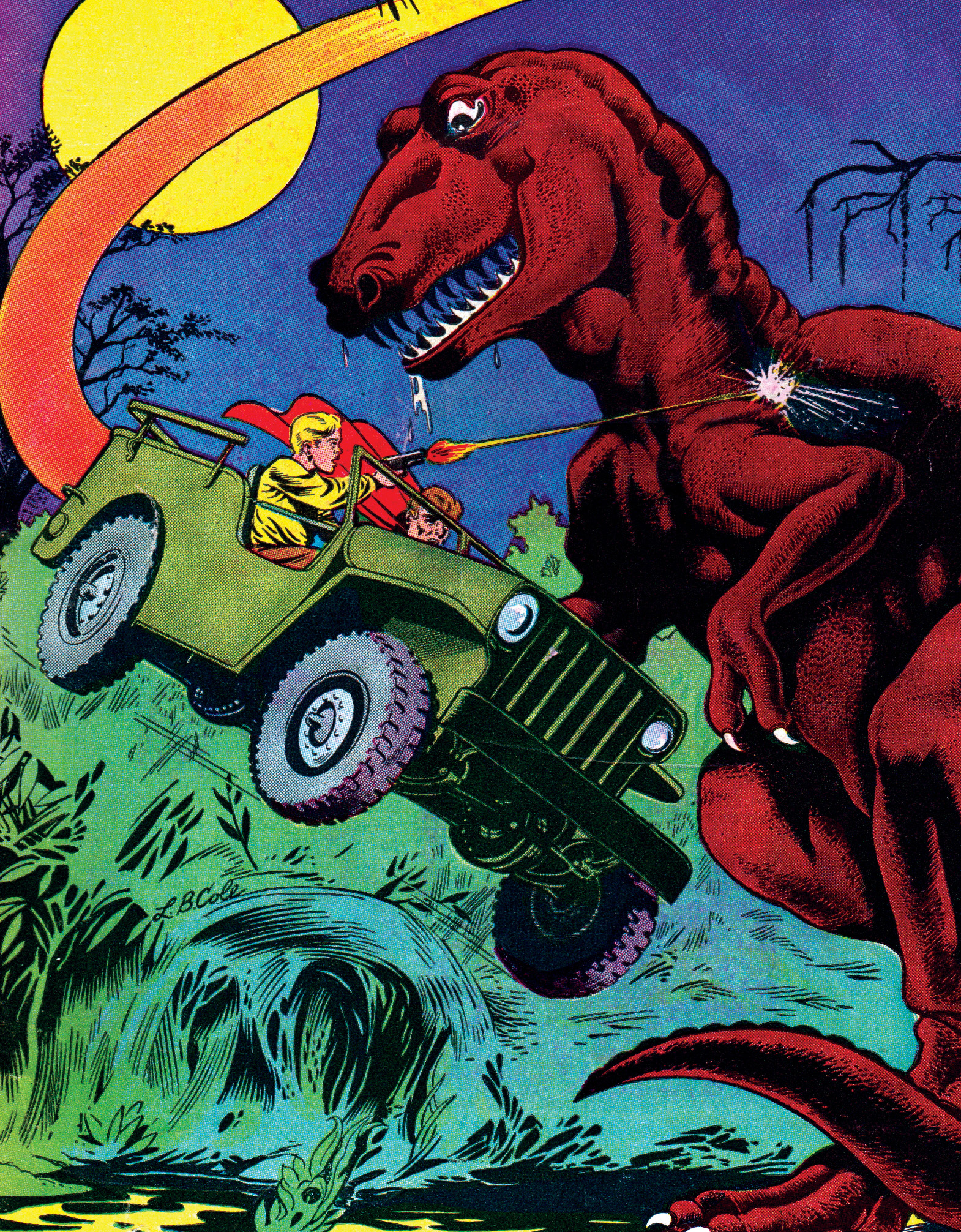
INTRODUCTION
WHAT WOULD A SUPERHERO BE without a plucky, pint-sized partner? What would a villain be with no obedient underlings? What would the landscape of superhero comics look like if there were no sidekicksor their felonious equivalents, henchpersons?
The answer to this last question is: Roughly the same. Nothing requires heroes to pick up a junior partner, or villains to acquire a minion or two. Many high-profile comic book characters do well without them. Nevertheless, sidekicks bring something different to the average super-powered grudge match between good and evil. Sometimes its humor, sometimes its vulnerability, sometimes its merely someone with whom the lead character can share a confidence or two. As superfluous as they may seem at first glance, sidekicks serve a valuable role in their senior partners stories.
They also serve a long tradition. The pulp magazines, radio shows, and dime novels that preceded comics produced a veritable army of underlings and assistants. The Lone Ranger and Green Hornet had Tonto and Kato; the Shadow had his sprawling network of secret operatives. Fu Manchu commanded the Si-Fan assassins. And the concept goes back even further, into literature and mythology: Don Quixotes Sancho Panza; Robin Hoods Merry Men; even the hairy wild man Enkidu of the Gilgamesh myth. If anything, comics were late to the game when it came to including these characters in stories.
Belated as they may have been, comics take that existing concept and crank the weirdness volume up to eleven. Beyond traditional costumed kid partners, the assistant heroes and adjunct villains covered in this volume range in age from childhood to dotage; they include men, women, children, animals, robot, andother. Some sport colorful costumes, others make do with street clothes. They are wards, junior partners, peers, and pals, but they are also fiends, creeps, and monstrous menaces. Sidekicks might be pets, imps, romantic partners, troublesome relatives, and all sorts of unlikely underlings.

Of course, not every creation hits a home run. Many of the junior crime busters, super-pets, underlings, and goons-for-hire youll meet in these pages are poorly thought-out, mistimed, or generally offensive. But so many more were worthy, if weird, ideas just executed in the wrong place or time. At the very least, they are all fascinating snapshots of what might have been. So, as with the other books in this series, please be aware that the term regrettable is used loosely and with affection.
Few sidekicks graduate to solo status. For every Winter Soldier (formerly Captain Americas sidekick Bucky) or Nightwing (once Batmans boy partner Robin), there are a few hundred Peeps, Zooks, Ungghs, Blargos, Monster Men, Gaggies, Ittys, Klonsbons, Bingos, and Dandies who spend their entire career in another characters shadow. Accordingly, within these pages, lets celebrate the second bananas on their own merits. They never enjoyed top billing, but they can at least enjoy this fleeting moment in the sun.
PART 1
AS WITH MANY TRENDS IN mainstream comics, it is Batman who is generally credited with launching the tradition of costumed kid sidekicks. The debut of Robin the Boy Wonder in 1940 opened the floodgates to literally hundreds of other junior superheroesa new category in the expansive history of the sidekick.
But sidekicks were a presence even before Robin swung onto the scene. Supermans creators, Jerry Siegel and Joe Shuster, partnered their roughneck detective Slam Bradley with a comical, would-be Sherlock-style sleuth Shorty Morgan (1937). They also created the mystical Dr. Occult and his adept assistant, Rose (1935). Meanwhile, Bob Kane spent part of his pre-Batman days drawing the funny animal adventures of Peter Pupp, accompanied by his sidekick Tinymite (1938). Likewise, the bad guys filled their staffing needs, generally preferring insidious monsters, robots, and thugs to the individual sidekick.
The annals of Golden Age sidekickery were awash with not just costumed kids but also with middle-aged men (largely of the working-class variety) and even elderly grandfather types. Heroes were backed by spirits, imps, genies, and mythological gods. Not to mention dogs, cats, parrots, hawks, tigers, lions, chimps, monkeys, gorillas, and every other type of animal.




